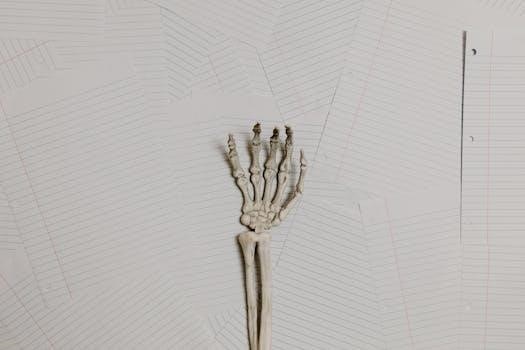Crash Cart Essentials
Crash carts are vital for emergency medical response, containing essential equipment and medications. They typically include oxygen, a defibrillator, suction devices, and basic monitoring tools like blood pressure cuffs and stethoscopes. Emergency drug sheets are also key for quick reference.
Purpose and Contents of a Crash Cart
The primary purpose of a crash cart, also known as an emergency cart or code cart, is to provide immediate access to life-saving equipment and medications during critical situations. These carts are designed to be mobile and easily accessible, ensuring healthcare providers can respond rapidly to emergencies such as cardiac arrest or respiratory failure. The contents of a crash cart are carefully curated to address common and life-threatening conditions, enabling swift intervention. Besides the basic monitoring equipment, crash carts also hold essential items like intravenous access equipment, including angiocaths and IV tubing, and fluids for intravenous administration. Some facilities include intraosseous access tools for cases where intravenous access is challenging. The selection and quantity of items can vary by facility, but the core goal remains consistent⁚ to provide quick and effective care in emergencies. These carts are crucial for ensuring patient safety and optimizing outcomes during critical events.
Basic List of Crash Cart Contents
A standard crash cart contains essential items categorized for quick access during medical emergencies. These typically include intravenous access equipment, which may consist of angiocaths, IV tubing, and IV fluids to establish immediate vascular access for drug delivery and fluid resuscitation. If a facility uses intraosseous access, drills and needles are included. Other items include alcohol swabs for sterilization, blank labels for medication identification, and black locks to secure the cart. The cart should also contain a range of medications. Typical medications include⁚ Amiodarone, often found in a 150mg/3ml injection, Atropine Sulfate 1mg/10ml injection, Calcium Chloride 1gm/10ml injection, and Dextrose 50 at 0.5mg/ml in a 50ml injection. Additionally, Dopamine 400mg/250 ml IV bag, Epinephrine 1mg/10ml injection, and Lidocaine (cardiac) 20mg/ml in a 5ml syringe or vial are common. Code-blue labels are also critical for documentation. This list ensures healthcare providers are equipped to handle various life-threatening scenarios efficiently.

Medications in a Crash Cart
Crash carts contain a range of crucial medications for treating cardiac and other emergencies. These drugs, including Epinephrine, Amiodarone, and Atropine, are vital for stabilizing patients during critical situations and managing life-threatening events.
Common Crash Cart Medications
A typical crash cart includes several essential medications, each with a specific role in emergency situations. Epinephrine is a cornerstone drug, crucial for treating cardiac arrest and severe allergic reactions. Amiodarone is used for managing ventricular tachycardia and fibrillation, especially when unresponsive to other treatments. Atropine is vital for treating bradycardia and some types of heart block by increasing heart rate. Other key medications include Calcium Gluconate, used in cases of hyperkalemia and hypocalcemia; Sodium Bicarbonate, which addresses metabolic acidosis; Dopamine, used to increase cardiac output and blood pressure; and Lidocaine, an antiarrhythmic. Furthermore, medications such as Naloxone, used to reverse opioid overdoses, and Vasopressin, which acts as a vasoconstrictor are available. Dexamethasone, a corticosteroid, and Albuterol, a bronchodilator, are also often included. These drugs are selected for their ability to rapidly address life-threatening conditions.

Epinephrine⁚ Use and Importance
Epinephrine, often considered the cornerstone of emergency treatment, plays a critical role in a crash cart. Its primary use is in the management of cardiac arrest, where it helps restore heart rhythm. Furthermore, epinephrine is crucial in treating severe allergic reactions, known as anaphylaxis, by reversing airway constriction and hypotension. This medication works by stimulating alpha and beta-adrenergic receptors, leading to vasoconstriction, increased heart rate, and bronchodilation. It’s typically administered through intravenous or intramuscular routes during emergencies. The presence of epinephrine in a crash cart is essential due to its rapid onset of action and its ability to address multiple life-threatening conditions. The drug’s use in cardiac arrest helps increase blood flow to the heart and brain, improving the chances of successful resuscitation. The medication’s impact during critical situations underscores its vital role in emergency medicine.
Amiodarone⁚ Administration and Indications
Amiodarone is a crucial antiarrhythmic medication found in crash carts, primarily used to treat life-threatening ventricular arrhythmias, such as pulseless ventricular tachycardia and ventricular fibrillation. It is administered undiluted over 10 minutes when these conditions are unresponsive to CPR, defibrillation, and vasopressor therapy. Additionally, amiodarone is used to suppress supraventricular tachycardia. This medication works by slowing conduction through the AV node, interrupting re-entry pathways, and helping to restore normal sinus rhythm. Healthcare providers must be familiar with its administration protocols, including dosage and infusion rates. It’s important to note that amiodarone has a long half-life and should be used with caution, monitoring for potential side effects like hypotension and bradycardia. Its presence in the crash cart ensures a potent option for managing severe and unstable cardiac arrhythmias, improving patient outcomes in critical situations.
Atropine⁚ Mechanism of Action
Atropine is an anticholinergic medication that plays a critical role in emergency situations and is a standard inclusion in crash carts. Its primary mechanism of action involves blocking the action of acetylcholine, a neurotransmitter, at muscarinic receptors. By doing so, atropine effectively reduces the parasympathetic nervous system’s influence on various organs. In the context of cardiac emergencies, atropine is used to increase heart rate by counteracting the effects of excessive vagal tone which can cause bradycardia, or slow heart rate. It achieves this by blocking the vagal nerve’s action on the sinoatrial (SA) node, thus accelerating the heart’s electrical activity. This makes atropine an essential medication for treating symptomatic bradycardia and certain types of heart block. Understanding its mechanism is crucial for healthcare providers to use atropine effectively in critical situations, enhancing patient outcomes during emergencies;
Other Key Medications⁚ Calcium Gluconate, Sodium Bicarbonate
Beyond epinephrine, amiodarone, and atropine, crash carts contain other crucial medications like calcium gluconate and sodium bicarbonate, each serving distinct purposes in emergency care. Calcium gluconate is primarily used to counteract hyperkalemia, a condition of elevated potassium levels in the blood that can cause life-threatening cardiac arrhythmias. It also helps stabilize the myocardial cell membrane, reducing the risk of cardiac arrest. This medication is also vital for treating calcium channel blocker overdose and certain types of hypocalcemia. Sodium bicarbonate is used to treat metabolic acidosis, a condition of excessive acid in the body, which can occur during cardiac arrest or severe shock. By raising the pH of the blood, sodium bicarbonate helps improve the responsiveness to other resuscitative medications. Both calcium gluconate and sodium bicarbonate are essential for managing electrolyte and acid-base imbalances during critical medical situations.
Medication Administration and Nursing Tips
Administering medications from a crash cart requires precision and speed. Nurses must be proficient in identifying medications, understanding their dosages, and being aware of potential side effects. It’s crucial to verify the medication, dose, route, and time before administering, following the “five rights” of medication administration. For medications like amiodarone, which can be administered undiluted over 10 minutes, healthcare providers must adhere to the recommended infusion rates to avoid adverse reactions. Careful monitoring for patient response is also important, including vital signs and any signs of drug-related complications. Always use proper aseptic techniques to minimize the risk of infection and document the medication administration in the patient’s chart accurately. Clear communication among the healthcare team during a code is vital to ensure coordinated medication delivery. Finally, knowing the mechanism of action and indications for each medication will improve the efficacy of the medical team during a crisis.

Crash Cart Maintenance
Maintaining a crash cart involves regular checks of expiration dates and restocking. Expired medications must be replaced promptly, and all supplies should be readily available. Proper tracking is essential for readiness in emergencies.

Expiration Tracking and Stocking
Effective crash cart maintenance is crucial, focusing heavily on meticulous expiration tracking and diligent restocking procedures. Each medication and supply within the cart must be regularly inspected for expiration dates, with immediate replacement of expired items being a priority. A system for recording lot numbers is essential for managing medications, ensuring that all items are within their usable timeframe. Furthermore, stocking must be a continuous process, not just a periodic event. After each use, the cart should be thoroughly examined, and consumed or compromised items must be replenished without delay. This also includes verification of quantities, ensuring that the necessary medications and supplies are at their designated levels. A designated person or team should be responsible for this process, adhering to a standardized checklist. This comprehensive method ensures that a crash cart is consistently prepared for any emergency, optimizing patient safety and outcomes. Proper maintenance also contributes to regulatory compliance.